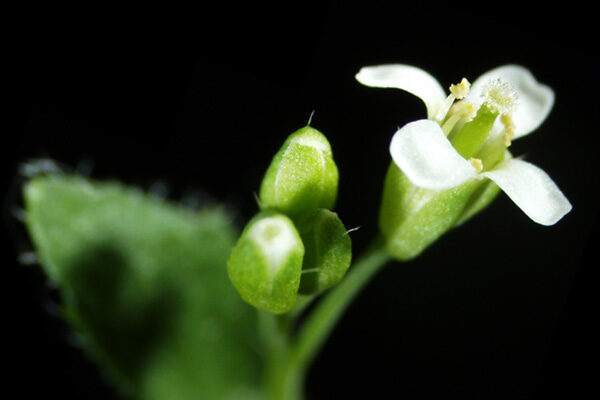Iron (Fe) is an indispensable micronutrient for plants since it is necessary for many important cellular processes. In order to survive Fe-deficient environments, plants have evolved sophisticated Fe deficiency responses for maintenance of Fe homeostasis. Recent studies have shown that Fe deficiency induces the resistance of plants to several pathogens. However, the molecular mechanism by which Fe deficiency induces the resistance to pathogens is unclear.
In a study published in New Phytologist, researchers from the Xishuangbanna Tropical Botanical Garden (XTBG) of the Chinese Academy of Sciences revealed that the inoculation of Botrytis cinerea (an airborne plant pathogen with a necrotrophic lifestyle) activated the Fe deficiency response of plants, which further induced ethylene synthesis and then resistance to B. cinerea.
The researchers evaluated the Fe deficiency induced resistance to B. cinerea in Arabidopsis, determined the expression of some genes involved in the Fe deficiency response, and assessed the resistance of some Fe signaling mutant plants to B. cinerea.
They found that B. cinerea inoculation of leaves activated the Fe deficiency response of Arabidopsis roots. The key components of Fe signaling, FIT (FER-like iron deficiency induced transcription factor) and bHLH Ib, were required for the induced resistance to B. cinerea. Fe deficiency induced the expression of root sadenosyl methionine (SAM) synthetases (SAM1 and SAM2) in a FIT-bHLH Ib module dependent manner.
They further revealed that the induction of SAM1 and SAM2 facilitated ethylene biosynthesis, hence enhancing the leaf resistance to B. cinerea.
The researchers proposed that B. cinerea infection increased Fe consumption and caused Fe deficiency which in turn activated ethylene-based immunity against B. cinerea.
“Plants sense the invasion of B. cinerea by perceiving Fe status and employ the Fe signaling to activate the ethylene pathway against B. cinerea. This study uncovers that the Fe signaling also functions as a part of the plant immune system against pathogens,” said LIANG Gang of XTBG.
Read the paper: New Phytologist
Article source: Chinese Academy of Sciences
Author: ZHANG Nannan
Image credit: Wikimedia








